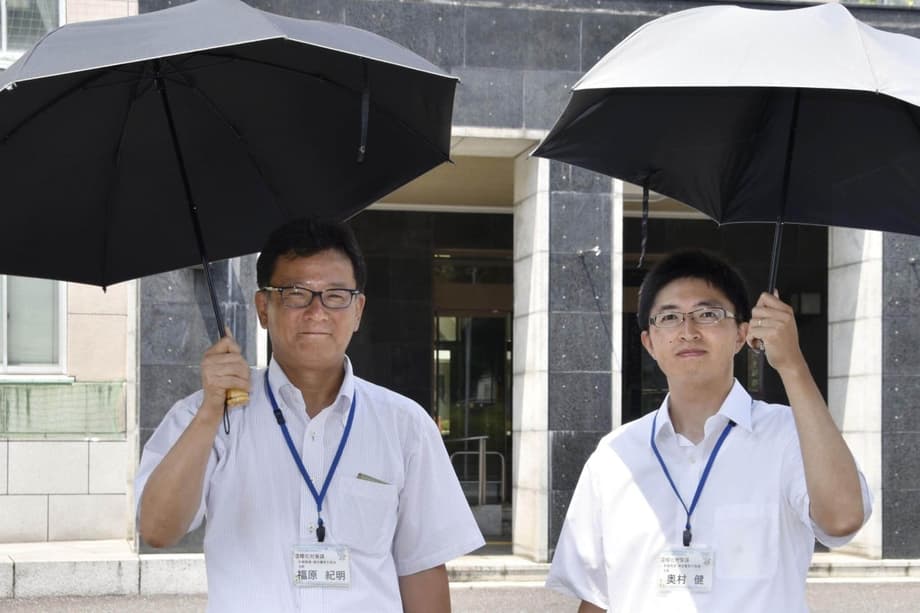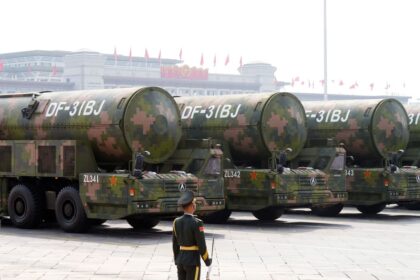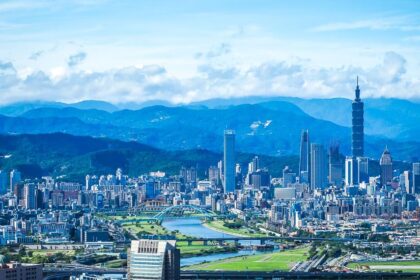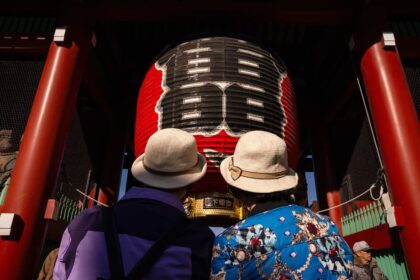Heat, health, and shifting habits in Tokyo and beyond
A small change on city sidewalks speaks to a larger shift across Japan. Parasols, long seen as a women’s accessory for sun protection, are being picked up by men in large numbers after a punishing summer. A Tokyo Metropolitan Government survey of app users conducted in September found that 44 percent of men used a parasol in 2025. Among women, the figure stood at 91 percent. Most male users said they did so to stay cooler during the most intense heat, a practical response to conditions that pushed comfort and safety past the limits of fans and hats.
- Heat, health, and shifting habits in Tokyo and beyond
- How extreme heat made shade a necessity
- What the Tokyo survey shows about men carrying parasols
- Do parasols actually keep you cooler?
- Technology and design bring broader adoption
- Policy, public campaigns, and city design
- Market and fashion shift toward function and calm style
- Regional parallels in South Korea
- Health guidance for staying safe in dangerous heat
- Highlights
The survey points to a wave of new adopters. Among men who carried parasols this year, 44 percent were first time users in 2025, 23 percent began last year, and 13 percent started two years ago. Age patterns were stark. More than half of men in their twenties and thirties reported using parasols. Usage was lowest among men in their fifties at 39 percent. Social pressure, which once discouraged men from carrying a sunshade, appears to be fading. Of the men who used parasols this summer, 61 percent said being seen under one did not bother them, and 34 percent said it bothered them less than they expected. The poll drew about 8,400 responses from people who live, work, or study in Tokyo, offering a snapshot of changing habits in the capital.
The shift comes after another blistering summer. Heat alerts became routine, commuters searched for shade, and hospitals saw steady flows of heat related illness. Many people, especially younger men, appear to have decided that portable shade is simply practical in these conditions.
How extreme heat made shade a necessity
Rising heat is not an abstraction in Japan. Health and disaster data show a clear trend. According to figures shared by national agencies, average heat stroke deaths rose from 67 per year before 1993 to more than 1,000 a year in the 2010s, then to about 1,253 per year from 2020 to 2022. During one week in July 2024, more than 9,000 people were hospitalized for heat stroke across the country. Emergency services and local governments issued repeated warnings, urging people to avoid exertion, seek shade, and hydrate during the hottest hours.
Deadly heat has struck in earlier years as well. In 2018, temperatures in Kumagaya northwest of Tokyo reached 41.1 degrees Celsius, the highest reading ever recorded in Japan at the time, and tens of thousands sought care for heat related illness. Officials at the Japan Meteorological Agency warned the public that summer heat had become dangerous. After noting a surge in casualties, the agency stated the risk plainly. A spokesperson for the Japan Meteorological Agency described the conditions that year in direct terms before urging protective steps.
We recognize it as a natural disaster.
Heat also strains a power system that must keep air conditioners running to prevent illness. In 2022, when temperatures soared in June, the government warned of tight supplies around Tokyo and asked residents to conserve energy by switching off unneeded lights and avoiding heavy appliance use in the late afternoon. Kaname Ogawa, director of electricity supply policy at the Economy and Industry Ministry, explained the scale of demand.
Electricity demand was bigger than expected.
Urban factors worsen the heat burden. The early end of the rainy season in some years cuts short the cooling effect of clouds. Concrete, asphalt, and glass trap and radiate heat, especially at night. Humidity elevates stress on the body. Japan’s older population, many of whom live alone, faces particular risk. In this environment, personal shade is a low energy tool that reduces exposure to direct sunlight and radiant heat while allowing people to keep moving.
What the Tokyo survey shows about men carrying parasols
The Tokyo findings offer granular clues to how attitudes are changing. The data suggests that men who tried parasols in 2025 often did so out of necessity, then discovered both comfort and social acceptance. Younger cohorts appear to be driving the change, but the most important signal is how little social discomfort many men reported after they tried it.
- 44 percent of men surveyed used a parasol in 2025
- 91 percent of women reported using one
- Among male users, 44 percent were first timers this year
- Men in their twenties and thirties had the highest usage rates
- Usage among men in their fifties was 39 percent
- 61 percent of male users said they were not bothered by stares
- 34 percent said it bothered them less than they expected
Academic research on behavior in Tokyo supports the idea that social expectations have held men back in the past. A 2023 survey based study of residents found that both men and women associated umbrella use for heat protection more strongly with women. The effect was more pronounced for men, who were less likely to carry an umbrella for shade. The study concluded that self confidence in taking protective action mattered more than perceived effectiveness, cost, or effort. Campaigns that normalize male umbrella and parasol use, and that boost confidence in the behavior, can raise uptake.
Do parasols actually keep you cooler?
Yes, portable shade reduces heat load in ways the body can feel. The sun transmits intense radiant energy that heats skin, clothing, and surfaces. A parasol blocks that radiation, reducing the amount of heat your body must shed through sweat and airflow. Field measurements in Japan show that a parasol can cut the heat stress index by a few degrees and make outdoor conditions feel significantly cooler. In trials led by the Ministry of the Environment, parasols reduced the Wet Bulb Globe Temperature by 1 to 3 degrees Celsius. Other environmental studies in Japan have reported perceived temperature drops of up to 7 degrees with an umbrella used as a parasol. These figures depend on the material, color, and reflectivity of the canopy, the angle of the sun, and wind.
Understanding WBGT and heat stress
Wet Bulb Globe Temperature (WBGT) is a composite measure used by public health and occupational safety officials to estimate heat stress. It blends air temperature, humidity, wind, and solar radiation into a single reading. As WBGT rises, the risk of heat stroke climbs, especially for older adults, children, and people doing physical work. A small reduction in WBGT can be meaningful. In government trials, a drop of 1 to 3 degrees moved readings from a higher alert to a lower one, indicating less danger. A parasol cannot change the air temperature, but by blocking sunlight it lowers the radiant heat load on the body and can bring a stressful environment closer to a safer range. Pairing portable shade with frequent water breaks and rest has a larger protective effect than any one step on its own.
More advanced parasols amplify the benefit. Fabrics that reflect light and block ultraviolet rays limit both heat and UV exposure. Shading the head, face, and neck helps reduce heat to sensitive areas and can delay the onset of dizziness, headaches, and dehydration that often precede heat stroke.
Technology and design bring broader adoption
Product innovation has expanded the audience for parasols beyond women. Japanese manufacturers have developed materials that block more than 99 percent of ultraviolet light and reflect a similar share of visible light. A fabric known as Summer Shield is designed to reduce felt heat by roughly 4 degrees Celsius or more under the canopy. Lightweight frames, quick fold mechanisms, and compact sleeves make carrying one between train rides and meetings easier. Design tweaks, such as rounded tips, help children carry them safely on the way to and from school.
People who work outdoors need stronger protection. Construction crews and delivery workers have increasingly tried other portable cooling products. Air conditioned jackets with small fans, which draw in outside air and speed evaporation of sweat, are one example. Users report fewer heat related trips to clinics when they combine such clothing with better hydration and shade.
Koji Ichigaya, chairman of Kuchofuku Co., Ltd., which popularized fan equipped workwear in Japan, has heard this directly from customers. He shared a story that captures the life changing effect of preventing heat stress.
I used to go to the hospital seven to eight times every summer for intravenous drips but since I started wearing Air Conditioning Clothing, I have never gone to the hospital.
Policy, public campaigns, and city design
Local governments have promoted everyday shade for years. In 2018, Tokyo and eight surrounding prefectures organized a free parasol rental event to encourage trial use. Government data from that event showed a reduction in the heat stress index by 1 to 3 degrees, enough to lower the alert level. The City of Kawasaki displays thermal images on its website to show temperature differences with and without a parasol, a simple visual that helps persuade residents to carry one. Seasonal campaigns have also urged men to use umbrellas for sun as part of heat stroke prevention, which aligns with the recent survey trend.
Organizers of large events are also adjusting. At the World Exposition in Osaka, companies are showcasing cooling technologies and adding shaded rest areas to cut exposure for visitors. One exhibit creates an ice house like environment with chilled panels, solar power, and a floor set slightly below ground to hold cool air. Tree clusters are arranged with computer models to create deep shade and channel breezes. These designs complement small personal steps like carrying a parasol.
Market and fashion shift toward function and calm style
Retailers are meeting demand with simpler, more neutral designs aimed at men who want function without flashy patterns. Many models feature dense woven canopies with reflective coatings and frames that balance strength with low weight. Foldable versions that slip into a briefcase or backpack have gained ground because they fit commuting routines. Compared with a rain umbrella, a parasol for heat is optimized to block light and radiant energy rather than withstand strong winds and heavy rain. Features such as a two layer canopy for stability and airflow, vented tips, and UV resistant linings have made them more comfortable on bright days.
Search trends and sales reflect this shift. Over the last few years, online rankings in Japan have elevated items marketed as parasols for men. Customer reviews commonly mention both cooler walking and reduced sunburn. Brands that once focused on rain gear now showcase summer lines that include parasols, cooling scarves, and light fabrics for shirts and hats. The look is understated, the focus is comfort and health.
Regional parallels in South Korea
The cultural shift does not stop at Japan’s borders. South Korea has seen a similar move toward portable shade among men during recent heat waves. Searches for parasols by male customers on a leading fashion platform jumped more than ninefold during a July heat spike compared with a year earlier, while department stores reported double digit increases in sales. Cities have set up rental stations so commuters can borrow a parasol for the walk between train stops and work. In 2021, the National Institute of the Korean Language removed wording in its dictionary entry that implied a parasol is mainly used by women, a small but telling sign of change.
Park, a 36 year old office worker in Seoul, recently bought his first parasol. He explained why the change made sense for him during the hottest weeks of summer.
Heat affects everyone regardless of gender. Portable shade is necessary in this weather.
Others described a similar pivot. Kang, a 31 year old salesman in Seoul, said he hesitated at first because of social perceptions, then found the cooling effect persuasive and kept using the parasol for skin protection on longer walks.
Health guidance for staying safe in dangerous heat
A parasol is one tool among many. It reduces solar radiation and can lower the body’s heat load, but it works best as part of a set of habits that keep you within safe limits. Public health officials in Japan have repeatedly urged residents to drink water often, rest in shade or cooled interiors, and avoid strenuous activity in the afternoon. Construction workers and others who labor outdoors face the greatest risk. The combination of heavy exertion, sunlight, and high humidity has led to disproportionate rates of heat stroke among outdoor workers. That makes portable shade, cooling garments, and scheduled breaks especially valuable on job sites.
- Carry a parasol during peak sun to reduce direct exposure and radiant heat
- Drink water regularly, even before you feel thirsty, and add electrolytes during long outings
- Plan activities earlier in the morning or later in the evening when possible
- Use a wide brim hat and light, quick drying clothing along with shade to improve comfort
- Take short breaks in shaded or air conditioned spaces to let your core temperature drop
- Check on older neighbors and family members, especially those living alone
- Watch for symptoms of heat stress such as headache, dizziness, nausea, and confusion
- Follow local heat alerts and adjust plans on days with very high WBGT readings
Personal shade also helps in periods when officials ask households to ease power demand. While air conditioning remains essential for health and safety, small steps like using a parasol on short errands and turning off unneeded lights can reduce peak loads without sacrificing comfort outdoors. The larger lesson from this summer is simple. In extreme heat, every degree of relief matters.
Highlights
- A Tokyo survey found 44 percent of men used parasols in 2025, while 91 percent of women did
- Among male users, 44 percent carried a parasol for the first time this year
- Men in their twenties and thirties reported the highest usage rates, while men in their fifties were at 39 percent
- Most male users reported little concern about being seen with a parasol
- Heat stroke deaths in Japan have risen to about 1,253 per year during 2020 to 2022
- Government trials show parasols can reduce the heat stress index by 1 to 3 degrees Celsius
- Advanced fabrics can block more than 99 percent of UV and reduce felt heat by several degrees
- South Korea shows a parallel trend, with sharp increases in searches and sales and city run rental programs
- Officials continue to issue heat alerts and advise hydration, shade, and rest during peak heat












